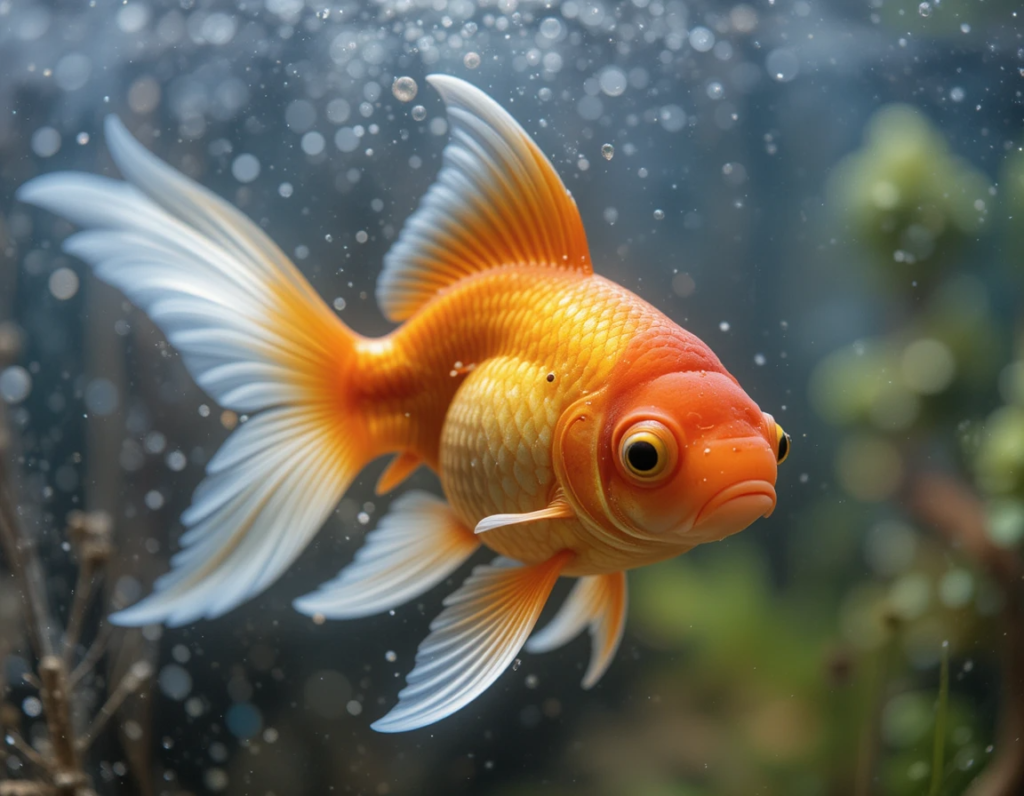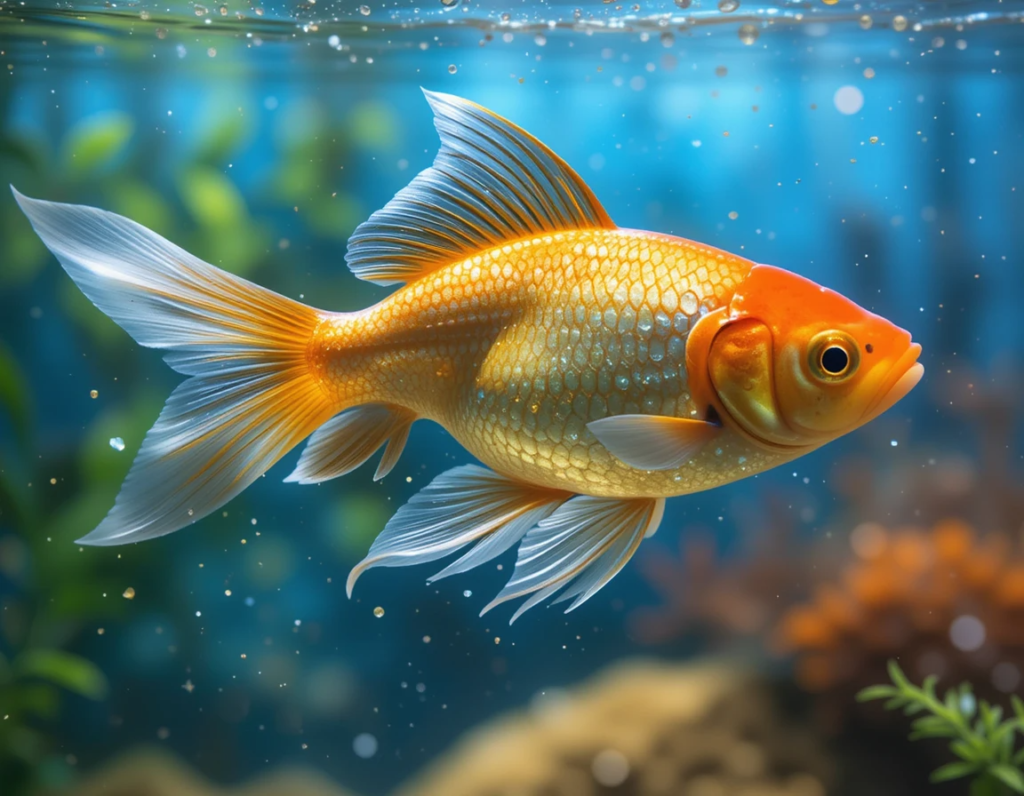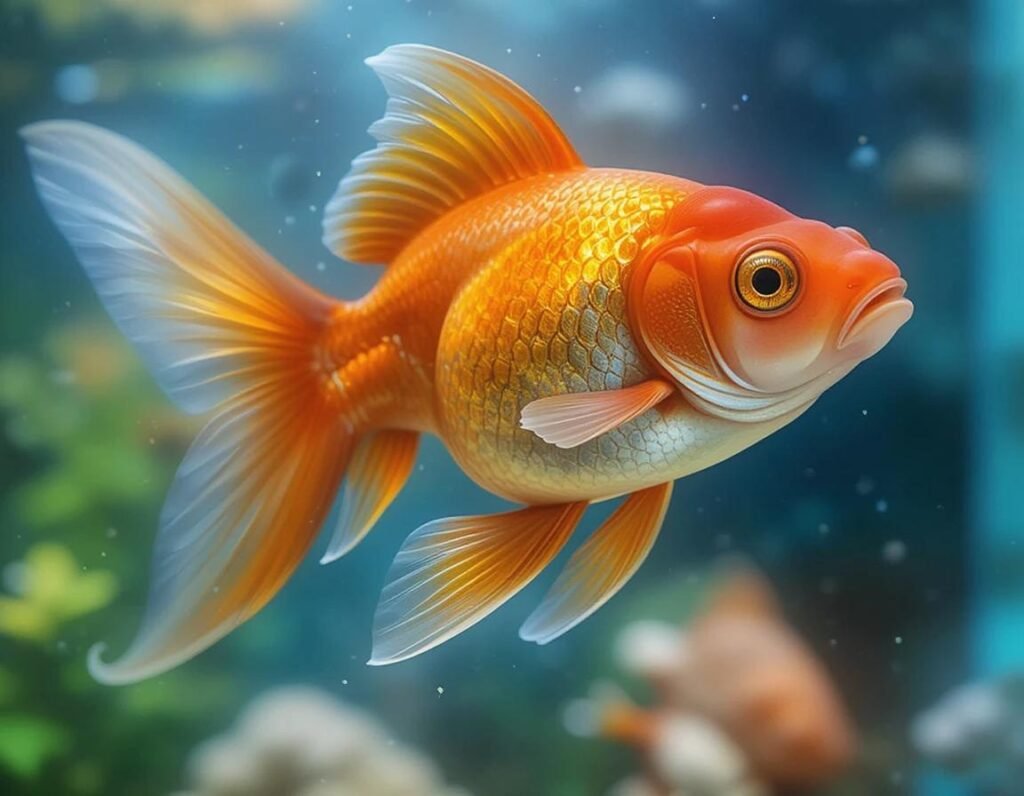
Goldfish make adorable, low-maintenance pets… until they start acting weird, and you start scratching your head wondering, “What did I do wrong?” One common issue many goldfish owners face is ammonia poisoning. While it sounds like something that would only happen in a chemistry lab, it’s actually something you’ll want to keep an eye out for if you’re a goldfish owner.
Let’s dive into the murky waters of ammonia poisoning—and no, this isn’t a goldfish trying to give you a science lesson. We’ll keep it simple, straight to the point, and sprinkle in a little humor to lighten the mood. After all, it’s just a little fish problem, right?
What Is Ammonia Poisoning?
Ammonia is a toxic substance that’s a byproduct of fish waste. It naturally builds up in a fish tank if you don’t manage it properly, and goldfish are especially sensitive to it. In a healthy aquarium, good bacteria break down ammonia into less harmful substances, but if the bacteria aren’t doing their job—or if you’ve been overfeeding your fish, ahem—the ammonia can build up to dangerous levels.
Imagine a goldfish trying to swim in a bowl of toxic soup—that’s what ammonia poisoning is like for them. It’s not pretty.
Signs of Ammonia Poisoning in Goldfish
So, how do you know if your goldfish is experiencing ammonia poisoning? They can’t just tap on the glass and say, “Hey, I’m not feeling too hot,” so here’s what you should look for:
- Erratic Swimming: If your goldfish is swimming like it’s had too much caffeine (fast, frantically darting around), ammonia might be the culprit. Goldfish will often try to escape the toxic environment.
- Gasping for Air: Since ammonia poisoning harms the gills, your goldfish might be seen swimming near the surface, gasping for air as it struggles to breathe.
- Clamped Fins: If your goldfish is hanging out like a disgruntled teenager with its fins clamped close to its body, it’s not a good sign. They’ll often do this when their gills are irritated.
- Lethargy: Ammonia poisoning can make your goldfish sluggish and tired. If it’s normally zipping around the tank and suddenly becomes a couch potato, it could be time to check the ammonia levels.
- Fading Colors: If your once-bright goldfish starts looking like it forgot to take its vitamins, the ammonia could be messing with its health.
How to Treat Goldfish Ammonia Poisoning
Okay, now that you’ve spotted the symptoms, what do you do about it? Don’t panic! There are a few steps you can take to fix things.
1. Test the Water (Don’t Guess!)
First things first: test the water. No, you don’t need a Ph.D. in chemistry to do this—just get yourself a reliable aquarium test kit. Measure the ammonia levels in the tank to confirm if they’re high. If they are, it’s time for some action.
2. Perform a Water Change (Big Splash!)
One of the easiest and most effective ways to lower ammonia levels is by doing a water change. A 25-50% water change can help dilute the ammonia and make the water safer for your goldfish. Just make sure the new water is properly dechlorinated and at the right temperature (cold water can stress your fish even more).
3. Add an Ammonia Detoxifier
There are special ammonia detoxifiers available at pet stores that can help neutralize ammonia in your tank. This is like giving your goldfish a breath of fresh air without waiting for your tank to magically balance out on its own.
4. Improve Filtration
Having a good filtration system in place is key to keeping ammonia under control in the long run. A filter that provides mechanical, biological, and chemical filtration will keep your tank cleaner and safer for your goldfish. If you’re not sure your filter is up to snuff, it might be time to upgrade.
5. Don’t Overfeed Your Fish!
This is where the “I might have fed them too much” moment happens. Overfeeding your goldfish creates more waste, which means more ammonia. Feed your fish small amounts that they can eat within a few minutes. If you’ve got leftover food floating around, scoop it out!

How to Prevent Ammonia Poisoning in the Future
You don’t want to go through this drama again, right? Here are some tips to keep ammonia poisoning at bay:
- Regular Water Changes: Changing about 10-25% of the water weekly keeps ammonia levels in check. It’s like cleaning up after your goldfish’s messy habits.
- Proper Filtration: As mentioned earlier, make sure your filter is doing its job. Clean it regularly and replace the media as needed.
- Monitor Feeding Habits: Resist the urge to spoil your goldfish with excessive food. Keep feeding times consistent and measure the amount of food you give them.
- Test Your Water: Keep an eye on the ammonia levels in your tank, especially if you notice your fish behaving strangely.
Final Thoughts on Goldfish Ammonia Poisoning
Goldfish are tough little swimmers, but even they have their limits. Ammonia poisoning is a serious issue, but with proper care, you can treat it and prevent it in the future. Think of it as being a good fish parent—like making sure your kid doesn’t eat a whole bag of candy. (It’s good for them, we promise!)
Remember: Keep an eye on your water quality, be cautious with feeding, and invest in a solid filtration system. With a little love and attention, your goldfish will swim happily ever after—without the toxic soup!
FAQs About Goldfish Ammonia Poisoning
1. Can ammonia poisoning kill my goldfish?
Answer: Yes, if not treated promptly, ammonia poisoning can be fatal to your goldfish. However, if you catch it early and fix the water quality, there’s a good chance your fish will recover.
2. How quickly can ammonia levels rise in a tank?
Answer: Ammonia levels can rise quickly, especially in a small or newly established tank. That’s why it’s important to regularly test the water and keep up with maintenance.
3. Will ammonia poisoning affect other fish in the tank?
Answer: Yes, ammonia poisoning can affect all the fish in the tank, not just the goldfish. If you have other fish, you’ll need to treat the entire tank.
4. Can ammonia poisoning be prevented?
Answer: Ammonia poisoning is preventable with regular water changes, proper filtration, and feeding practices. Keep the tank clean, and you’re golden!
5. How can I know if my goldfish is recovering from ammonia poisoning?
Answer: After you treat ammonia poisoning, you’ll want to monitor your goldfish closely. A good sign of recovery is when your fish starts swimming normally again, stops gasping for air, and seems more active. If its fins start spreading out and it stops hanging near the surface, that’s a great indicator things are improving. Keep testing the water to make sure the ammonia levels stay low, and watch for any further signs of stress.
6. Should I separate my sick goldfish from the other fish?
Answer: Yes, if you suspect one of your goldfish has ammonia poisoning, it’s a good idea to isolate them in a quarantine tank. This will reduce stress and prevent the spread of any potential diseases to your other fish. Plus, you can treat them more easily without disrupting the whole aquarium.
7. Can I use live plants to help reduce ammonia levels?
Answer: Absolutely! Live plants are a great natural filter for your tank. They absorb nitrates and ammonia, helping to keep the water cleaner and safer for your fish. Just make sure you have enough plants to make a difference, and don’t forget to give them some light (they need their own little “vitamin D” boost too)!
8. What should I do if my ammonia levels remain high after water changes?
Answer: If you’ve done water changes and ammonia levels are still high, it might be time to check your filtration system. It could be that your filter isn’t working effectively or needs to be cleaned. It’s also a good idea to test for other potential water issues, like nitrites or nitrates, as these can indicate problems with your tank’s nitrogen cycle.
Conclusion: Keep Calm and Keep Your Goldfish Happy
Ammonia poisoning might sound scary, but it’s totally preventable and treatable with the right care. By maintaining good water quality, monitoring your fish’s behavior, and acting quickly when you notice something’s wrong, you can keep your goldfish happy, healthy, and swimming smoothly through their aquatic world.
And remember, goldfish are resilient little guys. They may not have nine lives like a cat, but with the right care, they can certainly live long and happy lives (without the toxic soup!).
So next time you hear a splash or notice a little weirdness in your goldfish’s swim patterns, don’t panic. You’ve got the tools (and now the knowledge) to handle the situation like a pro. Keep those ammonia levels in check, and your goldfish will thank you by putting on a beautiful display of fin-wagging joy!


